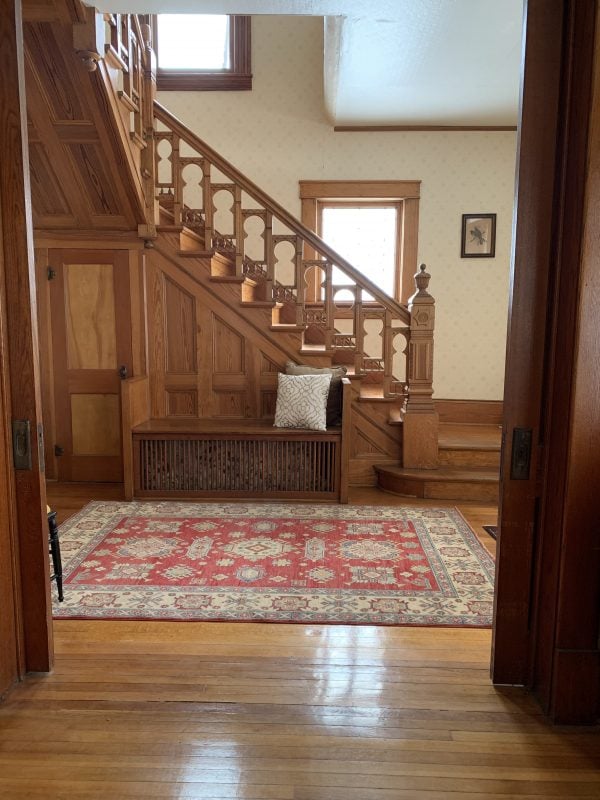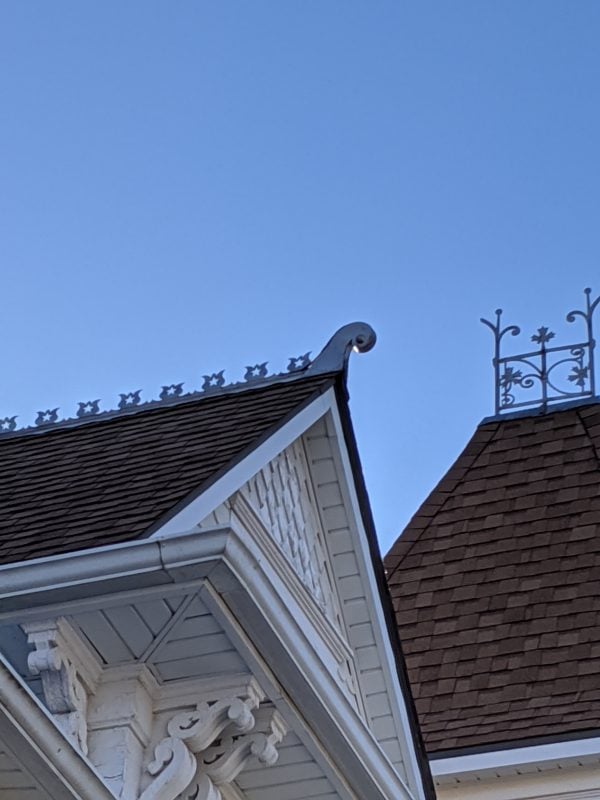Buying a home can be intimidating — a high-cost goal with a complex purchasing process. But it’s especially scary in a seller’s market, amid tightened lending standards, high prices, low supply and, oh, a global pandemic. In spite of this, more homes changed hands in 2020 than in any of the past 14 years, and I was among those braving the headwinds.
Because I’m a longtime NerdWallet writer and data analyst, you might not be surprised to hear that I spent hours playing with the numbers and made decisions that will ultimately save me thousands of dollars.
However, I’m not sharing a complex spreadsheet system or secret formula for choosing a mortgage. Instead, the lessons I applied in my latest home purchase — a hulking Victorian in small-town Kansas — prove that the best financial advice is a starting point, not an edict, meant to be applied through the lens of your own personal circumstances.
Know how the market relates to your circumstances
Active listings in November and December 2020 were down nationally about 40% year-over-year, and this shortage of homes was certainly being felt in the small North Carolina town I’ve called home for 15 years. I knew unloading my current home wouldn’t be difficult, even with its age (about 100 years) and all of its old house quirks (hello, plaster walls!), plus a shared driveway and aging HVAC system. I chatted with two local real estate agents who agreed I would likely have multiple offers in a matter of weeks, if not days.

The writer's Victorian-style home, built in 1885 in a small town in Kansas, features a grand oak staircase. (Photo courtesy Elizabeth Renter)
Selling a home in this market might be a cinch, but buying a replacement could bring challenges. However, I knew I’d be shopping for a unique home in a lower-demand area, so competition wouldn’t be quite as fierce.
Sidebar here to explain: Demand for my kind of dream house is pretty low. I have a thing for big old houses, and not everyone is willing to take on a home built in the 19th century in need of TLC. Also, my only prerequisite on location was that it be within an hour’s drive of my nearest family members.
Once I made the decision to move, poring over old house listings during my lunch became an obsession. And when I stumbled across this one — managing to look past the seller's furnishings — I was intrigued. The list price, befitting a tiny Kansas town, certainly helped.
After a cellphone video tour from a local agent, and sending family members over to tour the home in person, I offered the full asking price. Yes, even without seeing it in person. Just a few weeks after deciding I was ready for a big move, I was under contract on an 1885 beauty with a grand oak staircase, 1960s carpeting, 1980s wallpaper and untold treasures in the limestone basement.
One week later, I accepted an offer on my North Carolina home, one that was 43% more than what I’d be paying for my new-to-me home in Kansas.
If you're thinking, "Well, congratulations, but I'm not really sure what this Cinderella situation has to do with me," I don't blame you. But while not every buyer might have my flexibility or experience, there are a couple of widely applicable takeaways.
What it means for other home buyers
It’s a great time to sell a home. If you’ve been thinking about selling but are concerned that your house needs work, now more than ever, you may be able to get away with minimal prep. Talk to a local real estate agent (or two) to gauge the potential for success if your home hits the market today.
Supply is low and competition is fierce right now, but not everywhere and not for all homes. Buying your next home will be easier the more flexible you can be on features, location and price. And if you’re able to move from a hotter market to one with less competition, you could come out of it with a profit.
Buck the rules, with caution
Amassing a down payment is typically one of the more difficult aspects of getting ready to buy a home. One way around that is using the proceeds from your current home’s sale in your new home’s purchase. But given the fast-moving, strong seller’s market we’re in, I didn’t want to load my offer-to-purchase with contingencies that would make the transaction more complex and less attractive to the seller, and I wanted to move quickly.

The home's ornamentation on the gabled rooftop. (Photo courtesy Elizabeth Renter)
To get the lowest mortgage rate, manageable monthly payments and equity in my new home right off the bat, I knew I wanted to put at least 20% down on my purchase. I had about one-third of that in usable savings. The rest came from a 401(k) loan. Cue the collective gasp from my colleagues.
Borrowing against your retirement is a risky move that could wreck your long-term financial health, and is generally cautioned against. It wasn’t a decision I made lightly: My paychecks would be lower until it was paid off, I’d miss out on any returns that money would’ve otherwise earned sitting safely in my account, and if I ended up losing my job before the loan was paid back, I’d need to accelerate repayment or face it being taxed as income.
But I weighed those risks carefully against the rewards — buying a house I loved in a place I really wanted to be — as well as the health of my personal financial situation and found I could handle them. I paid that loan off with the proceeds of my home sale about 45 days after taking it out.
What it means for other home buyers
Writing an attractive offer on a home isn’t only about the price you’re offering. Faced with multiple offers or the knowledge that more could be coming, a seller will lean toward those that make the transaction look as simple and painless as possible. An agreeable closing date, minimal contingencies and proof of your ability to obtain financing are all part of a competitive offer.
Financial advice isn’t one-size-fits-all. When making money decisions that involve risk, determine what those risks look like to you specifically. Spend time thinking about the worst-case scenario and the chances it could happen. Assess whether you would be able to weather that storm if it did.
Play with the numbers, then play with them some more
This is my third home purchase, and the previous two involved 30-year mortgages. This time, between my larger down payment, lower purchase price, low mortgage rates and selling my home in North Carolina for a profit, I had some flexibility in loan length. A 30-year loan would make for incredibly low payments, but a 20- or even 15-year loan would mean paying considerably less interest over the long term.
A younger version of me would have likely chosen lower payments and a longer term — anything to reduce my monthly bills. But the payments for the shorter-term loan would still be manageable (keeping me below the 36% guideline on debt-to-income ratio) and would save me tens of thousands of dollars in interest. Also, the thought of owning my home free and clear in less than three decades was very appealing.
I shopped for a lender, something I strongly recommend. I settled on one whose online platform made it easy to compare loans and gave me control and insight into the entire buying process. Between its tools and NerdWallet’s calculators — I put some serious miles on this mortgage calculator — I spent numerous hours across several weeks comparing my options, not fully committing to a 15-year mortgage until nearly the last minute.
What it means for other home buyers
Calculate several scenarios, weighing the costs and benefits of each. If the payments for a 15-year fixed-rate mortgage still allow you to stay on top of your other bills and long-term financial goals such as retirement, you’ll save considerably in the long run. For example, financing $240,000 for 30 years at 3% costs about $124,000 in interest, where a comparable 15-year mortgage costs $44,000. Also, if you’re looking to take advantage of super-low interest rates, shorter-term loans generally offer the lowest rates.
Shop around for a lender and a loan. You’re in the driver’s seat, so comparison shop your financial products like you would a new car. Gone are the days where your neighborhood banker drew up your loan documents and you merely were there to sign on the dotted line. You have options, and this power means finding a mortgage that fits your budget, lifestyle and long-term financial goals.
It’s a good time to be a home seller, to be sure, but rising home prices and a lack of supply could deter current owners from unloading their existing home for fear of joining the masses of competing buyers. But there are homes to be bought — millions of Americans will successfully purchase homes this year. To be among them, you don’t have to expand your home search to include everything in a 1,500-mile radius, but flexibility is key as is knowing when and how to apply savvy financial rules.



